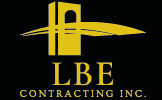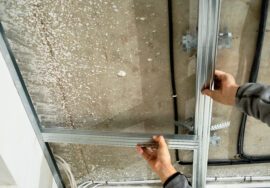
Top 5 Signs You Need Drywall Repair in Your Toronto Home
Drywall is an essential part of every home, providing structural support, insulation, and a smooth, finished surface for your walls and ceilings. Over time, however, wear and tear, accidents, and environmental factors can cause damage to your drywall. If you notice any signs of trouble, it’s important to address the issue quickly to maintain the integrity and appearance of your home.
In this article, we will discuss the top 5 signs that you need drywall repair in your Toronto home. Recognizing these issues early and getting them repaired can prevent costly damage and ensure that your home remains in great condition for years to come.
Why Drywall Is Important in Your Toronto Home
Before diving into the signs that your drywall may need repair, it’s helpful to understand its role in your home. Drywall serves several functions:
- Structural integrity: Drywall contributes to the overall structural support of your home, especially when it’s installed correctly with studs and framing.
- Soundproofing and insulation: Drywall helps with insulation and noise control, contributing to the comfort of your home.
- Aesthetic appeal: Drywall provides a clean and smooth surface for painting and decorating, enhancing the overall look of your rooms.
Now that we’ve covered why drywall is crucial, let’s take a look at the common signs that indicate your drywall may need repair.
1. Cracks in the Walls or Ceiling
What It Means:
- Cracks in drywall, whether in the walls or ceiling, are one of the most common signs that your drywall may need repair. These cracks can vary in size and appearance, from small hairline fractures to larger gaps.
- Small cracks are often caused by settling of the house or temperature changes, while larger cracks can result from structural issues, water damage, or shifting in the foundation.
What to Look For:
- Vertical or horizontal cracks: These may appear due to structural shifting or settling.
- Cracks around windows and doors: If you notice cracks forming around frames, this could be a sign of movement in your home’s foundation.
- Cracks near ceiling corners or along seams: These cracks are usually related to settling or humidity changes.
Why You Need to Repair It:
- Small cracks may not seem like a big deal, but if left untreated, they can worsen over time, leading to more significant damage. In some cases, cracks may be a sign of underlying issues like foundation problems or moisture intrusion, which need to be addressed promptly.
2. Water Stains or Discoloration on Drywall
What It Means:
- Water stains or discoloration on drywall can result from leaks in the roof, plumbing issues, or poor ventilation. These stains can range from small, light spots to large, brownish discolorations that spread across your walls or ceiling.
- The presence of water stains is a clear indicator that moisture is getting into your drywall, which can lead to mold growth, rotting, and further structural damage if left unchecked.
What to Look For:
- Yellow or brown stains: These stains typically appear after a water leak, either from a roof, pipe, or window.
- Soft spots: If the drywall feels soft or spongy around the stain, the water may have weakened the material, requiring immediate repair.
- Musty smell: A persistent damp smell often accompanies water damage and mold growth.
Why You Need to Repair It:
- Water-damaged drywall can become a breeding ground for mold and mildew, which can be harmful to your health and damage the materials further. It’s essential to address water stains quickly to avoid costly repairs and potential health risks.
3. Holes or Dents in the Drywall
What It Means:
- Accidents happen, and drywall can be easily damaged by impacts, such as from furniture, doors, or even everyday activities. Whether it’s a small hole from a doorknob or a larger dent caused by a heavy object, these imperfections can detract from the appearance of your walls.
- Larger holes may also expose electrical wiring or pipes behind the drywall, making it essential to repair them promptly.
What to Look For:
- Small holes or dents: Typically caused by accidental impacts or moving furniture.
- Larger holes: These may be caused by accidents, kids, or animals, and they can leave the wall exposed and vulnerable.
- Visible damage around vents or electrical outlets: This can be a sign of wear or impact in those areas.
Why You Need to Repair It:
- Holes and dents not only affect the look of your home but can also compromise the structural integrity of the wall. Additionally, larger holes can lead to drafts, energy loss, or exposed electrical systems, posing safety risks. Repairing these holes early will prevent further complications.
4. Sagging or Bowing Drywall
What It Means:
- If your drywall is sagging or bowing, this indicates a serious issue. This problem often occurs due to water damage, as the weight of the water causes the drywall to soften and weaken. It can also result from excessive humidity or improperly installed drywall.
- In some cases, sagging drywall may be a sign of a more severe structural issue, such as a roof leak or faulty framing.
What to Look For:
- Visible sagging in the ceiling or walls: This is most commonly seen in ceilings after water damage or in areas of high humidity.
- Bowed walls or ceilings: These walls may appear bent or out of alignment, and the drywall may feel soft to the touch.
Why You Need to Repair It:
- Sagging or bowed drywall is often a sign of water damage or structural issues. If left unchecked, it can lead to further weakening of the material, increasing the risk of collapse. Repairing this damage quickly will prevent further deterioration and keep your home safe.
5. Nail Pops or Screw Holes
What It Means:
- Nail pops or screw holes occur when the fasteners used to secure the drywall to the studs begin to loosen or shift. Over time, the pressure from the nails or screws can cause the surface of the drywall to bulge, leaving small bumps or dimples that can be unsightly.
- Nail pops are particularly common in older homes or in areas with significant temperature changes, such as basements or attics.
What to Look For:
- Small bumps or dimples on the wall: These are caused by fasteners pushing through the surface of the drywall.
- Visible fasteners: If you can see nails or screws sticking out of the wall, this is a sign of loose fasteners that need to be addressed.
- Cracks around fasteners: If you see cracks radiating from the fasteners, it’s a sign that the drywall is shifting or moving.
Why You Need to Repair It:
- While nail pops may seem like a minor issue, they can weaken the drywall and cause further damage if not repaired. Addressing nail pops quickly will help maintain the integrity of your walls and prevent the need for more extensive repairs down the line.
Why You Should Hire a Professional for Drywall Repair in Toronto
If you’ve noticed any of these signs of drywall damage, it’s important to take action as soon as possible. While DIY repairs are tempting, drywall repair can be tricky, and poor repairs can lead to more significant issues down the road.
Here’s why hiring a professional service like LBE Contracting is the best option:
- Expertise and Experience: LBE Contracting’s team of professionals has years of experience with drywall repair, ensuring that your repairs are done quickly and efficiently.
- Quality Materials: A professional service uses high-quality materials to ensure the durability and long-lasting results of the repair.
- Time and Cost Efficiency: With the right tools and expertise, professionals can complete the job in a fraction of the time it would take a homeowner to do it themselves, saving you time and effort.
- Seamless Finish: Professional drywall repair ensures that the surface is smooth, free from visible seams, and ready for drywall painting, giving your walls a polished, flawless appearance.
Address Drywall Damage Early to Maintain Your Home’s Integrity
Drywall damage is common, but it’s important to address it promptly to avoid more serious issues. If you notice cracks, water stains, holes, sagging, or nail pops, it’s time to call in a professional for drywall repair. Taking action early can help prevent more expensive repairs in the future and keep your home looking its best.
If you need reliable drywall repair services in Toronto, don’t hesitate to contact LBE Contracting. Their experienced team will ensure your drywall is restored to its original condition, keeping your home safe, comfortable, and beautiful.



